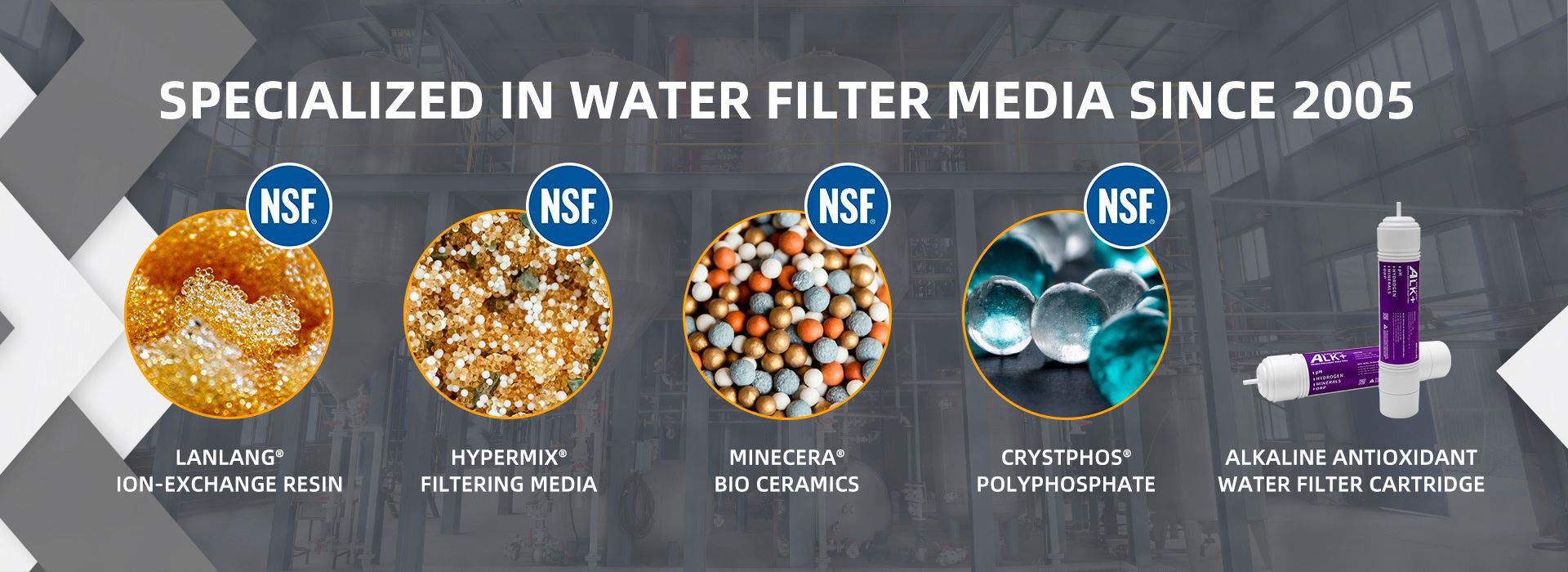Ion exchange resins are a class of substances that can exchange ions, divided into inorganic ion exchangers (such as zeolite) and organic ion exchangers, that is, ion exchange resins. Inorganic ion exchangers have been discovered and applied as early as a hundred years ago, but organic ion exchange resins were not born in the UK until 1935. Subsequently, the German IG company industrial production of WOFAtit ion exchange resin, the French ACFI company of sulfonated coal cation exchanger and aromatic amine anion exchange resin combination of the multi-bed desalinated water manufacturing device began to operate, the United States according to the start of adams industrial production of Amberlite series ion exchange resin.
In the second World War, the United States GE company obtained the chemical and physical properties of polycondensation ion exchange resin stable and economical synthesis of styrene and acrylic acid series plus polymer ion exchange resin, this invention created the basis of today's ion exchange resin manufacturing methods, Germany IG company invented polyphenol and formaldehyde condensation polymer with the ability to remove oxygen in water. This was the beginning of reoxidation reduction resin. IG Company in Germany also used ion exchange resin for water refining, recovered copper and ammonia from the wastewater of copper ammonia rayon factory, recovered silver from the waste liquid of washing image, and desalted sucrose solution. During this period, ion exchange resin was used in the United States not only for water refining and quinine extraction and refining, but also for uranium nuclear fission products, uranium elements, and other materials. The separation and extraction of rare earth elements, especially the 61st element promethium, have also achieved results.
After the Second World War, Norway developed a resin that is selective for potassium and can extract potassium from seawater, which is the beginning of chelating resin research, the company selected which strong basic anion exchange resin and weakly acidic cation exchange resin methacrylic acid began industrial production.
The 1950s was a period of rapid development of ion exchange resins and industrial applications. In 50 years, the mixed bed pure water preparation device with a tower diameter of 1M in the United States began to be practical, and the use of weak acidic cation exchange resin to extract refined streptomycin also realized industrialization. In 1952, a large fixed bed device for extracting refined uranium with a strong basic ion exchange resin began to operate in South Africa. IONIC company in the United States began to produce ion exchange membrane for boiler water electrodialysis treatment desalination, and then, the Japanese company's large mixed-bed glucose delay decolorization refining device with good performance was put into practice, and the US MICHIGAN Chemical Corp strong acidic cation exchange resin large-scale rare earth element separation and refining device began to operate. DowChemical Corporation began production of styrene-iminocarboxylic (suo) acid type chelating resin.
In 1960, Rohm&Haas Company began to produce styrene ion exchange resin, the synthesis and industrial application of ion exchange resin entered a new era, 1962 Rohm company non-aqueous solution and catalytic ion exchange resin Amberlyst began to produce, ion exchange resin as a catalyst began to enter the chemical processing industry, later, Australian WEISS et al. used a mixed bed of weakly acidic cation exchange resin and weakly basic anion exchange resin to desalinate boiler water, and used hot water of 80 degrees to regenerate ion exchange resin, and proposed a new method of ion exchange resin regeneration and desalting. In 1966, Rohm Company synthesized non-sexual adsorbent with MR Porous resin of styrene, styrene copolymer of the mother body. Thus began the application of organic adsorbents in the separation of mixtures, and subsequently, the company introduced particle ion-exchange resin ice with a diameter of 0.5-1.5UM to synthesize new adsorbent samples.
In 1973, DU PONT Company successfully studied perfluorinated sulfonic acid resin, and the ion exchange membrane made of this resin has been applied in the electrolysis industry and fuel cells, and has received widespread attention as an acidic catalyst in organic synthesis.


